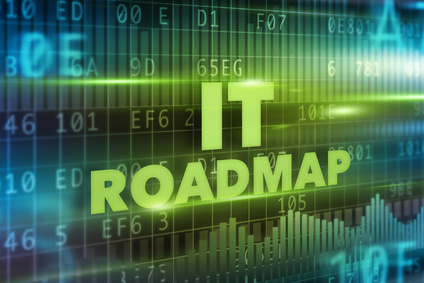
Creating an IT roadmap shouldn’t be all about the bells and whistles of the system, but rather on the technology that supports the strategy and business objectives.
Ever heard about 1’s and 0’s as it relates to computers? That level of detail is often what I see with systems. We spend so much time on the details of systems that we forget about strategy. Yet with as significant an investment as we often make in systems and technology, we should consider strategy. In the IT world, this is sometimes called a roadmap.
I recently participated in a supply chain roadmap for the Inland Empire focused on the needs through 2025. Although related to supply chain instead of systems, it reminded me of the value of thinking big picture and longer term – a great exercise to go through to take a comprehensive view and think about strategy!
When creating an IT roadmap, there are several areas to consider: 1) The strategic priorities of the business. 2) systems and technology strategy to support the business objectives. 3) opportunities to leverage technology for additional improvements.
- Strategic priorities: Do NOT start with the latest and greatest technologies available. It might be “cool” to integrate the latest iPhone into the mix but is that the best option for supporting the business strategy and objectives? Instead, start with the strategy for the company. Understand the key elements of the strategy. Dig deep into what will be a positive effect for the strategy and what roadblocks or issues might arise in meeting the strategy. Before one technology is mentioned, there should be a clear understanding established of the business strategy.
- Systems & technology to support the business strategy: How do we translate the business strategy into an IT strategic roadmap? What will be required from an IT standpoint to ensure success with the business strategy? Start by evaluating your current infrastructure and systems architecture. How does that compare with what will be required to meet the long-term business strategy? Undoubtedly, gaps will emerge. There will be several options for how to address the gaps. The key will be evaluating the options from a complete business standpoint, considering 1) cost; 2) service (including speed); 3) automation/ efficiency; 4) strategic fit (although each is a fit overall, some will be more closely aligned than others); and 5) ability to support growth.
- Opportunities to leverage technology for additional improvements: Beyond what is required to support the business strategy, IT will uncover opportunities for further improvement. Typically, these opportunities will fit into one of the following categories: 1) IT infrastructure / architecture improvement due to advances in technologies available; 2) Opportunities for business process improvements by leveraging new functionality and technology that has emerged since the last roadmap. 3) New combinations of systems/ technologies which will drive further results. Within the scope of the company strategy and objectives (which will also dictate return on investment and associated budgets and resources), selecting the highest impact priorities is a great starting point.
For example, if upgrading your ERP system is a “must” to support profitable business growth (which wouldn’t be surprising as I’m seeing a heightened increase in this area within the last 12-24 months), selecting the system that best matches and supports your strategic priorities is vital. I consider these critical success factors. There will be several options for how to host the ERP system: 1) purchase and maintain your own technology; 2) utilize remote servers, maintained by experts in the hardware infrastructure chosen; or 3) cloud – in essence, rent your hardware and software infrastructure with no “hands-on” responsibilities. Undoubtedly, there will also be opportunities for improvement that arise with the new ERP system. It will be cost and resource prohibitive to implement them all; however, implementing the top few can drive substantial results.
Do you know where your IT team is headed? Does it line up with the business priorities? In today’s Amazon effect marketplace where speed is of the essence, there is no time to waste. Align your IT strategy with your company strategy and optimize your investment in systems and technologies to elevate your business performance.


